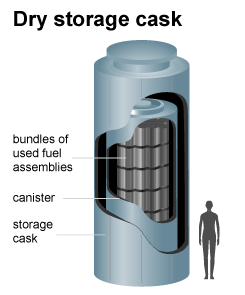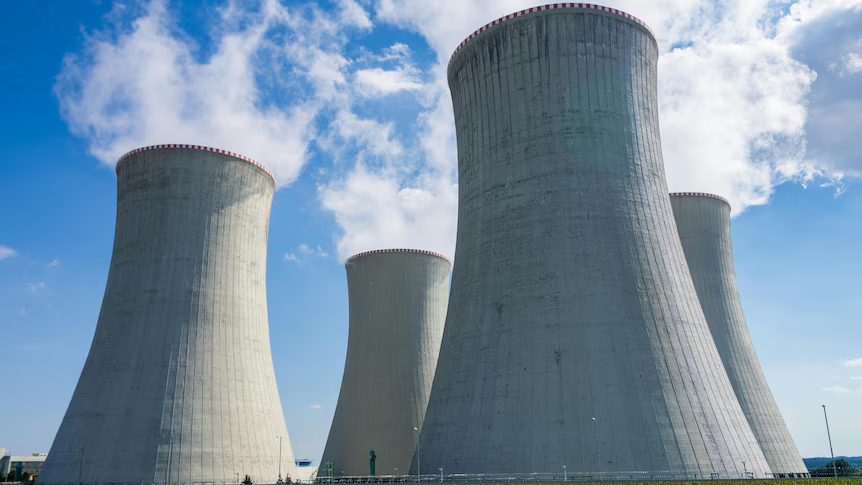Nuclear reactors and power plants have complex safety and security features
An uncontrolled nuclear reaction in a nuclear reactor could result in widespread contamination of air and water. The risk of this happening at nuclear power plants in the United States is small because of the diverse and redundant barriers and safety systems in place at nuclear power plants, the training and skills of the reactor operators, testing and maintenance activities, and the regulatory requirements and oversight of the U.S. Nuclear Regulatory Commission. A large area surrounding a nuclear power plant is restricted and guarded by armed security teams. U.S. reactors also have containment vessels that are designed to withstand extreme weather events and earthquakes.
Nuclear power reactors do not produce direct carbon dioxide emissions
Unlike fossil fuel-fired power plants, nuclear reactors do not produce air pollution or carbon dioxide while operating. However, the processes for mining and refining uranium ore and making reactor fuel all require large amounts of energy. Nuclear power plants also have large amounts of metal and concrete, which require large amounts of energy to manufacture. If fossil fuels are used for mining and refining uranium ore, or if fossil fuels are used when constructing the nuclear power plant, then the emissions from burning those fuels could be associated with the electricity that nuclear power plants generate.
Nuclear energy produces radioactive waste
A major environmental concern related to nuclear power is the creation of radioactive wastes such as uranium mill tailings, spent (used) reactor fuel, and other radioactive wastes. These materials can remain radioactive and dangerous to human health for thousands of years. Radioactive wastes are subject to special regulations that govern their handling, transportation, storage, and disposal to protect human health and the environment. The U.S. Nuclear Regulatory Commission (NRC) regulates the operation of nuclear power plants.
Radioactive wastes are classified as low-level waste or high-level waste. The radioactivity of these wastes can range from a little higher than natural background levels, such as for uranium mill tailings, to the much higher radioactivity of used (spent) reactor fuel and parts of nuclear reactors. The radioactivity of nuclear waste decreases over time through a process called radioactive decay. The amount of time it takes for the radioactivity of radioactive material to decrease to half its original level is called the radioactive half-life. Radioactive waste with a short half-life is often stored temporarily before disposal to reduce potential radiation doses to workers who handle and transport the waste. This storage system also reduces the radiation levels at disposal sites.
By volume, most of the waste related to the nuclear power industry has a relatively low level of radioactivity. Uranium mill tailings contain the radioactive element radium, which decays to produce the radioactive gas radon. Most uranium mill tailings are placed near the processing facility, or mill, where they come from. Uranium mill tailings are covered with a sealing barrier of material such as clay to prevent radon from escaping into the atmosphere. The sealing barrier is covered by a layer of soil, rocks, or other materials to prevent erosion of the sealing barrier.
The other types of low-level radioactive waste are the tools, protective clothing, wiping cloths, and other disposable items that become contaminated with small amounts of radioactive dust or particles at nuclear fuel processing facilities and nuclear power plants. These materials are subject to special regulations for their handling, storage, and disposal so they will not come in contact with the outside environment.
High-level radioactive waste consists of irradiated, or spent, nuclear reactor fuel (fuel that is no longer useful for producing electricity). The spent reactor fuel is in a solid form, consisting of small fuel pellets in long metal tubes called rods.
Spent reactor fuel storage and reactor decommissioning
Spent reactor fuel assemblies are highly radioactive and, initially, must be stored in specially designed pools of water. The water cools the fuel and acts as a radiation shield. Spent reactor fuel assemblies can also be stored in specially designed dry storage containers. An increasing number of reactor operators now store their older spent fuel in dry storage facilities using special outdoor concrete or steel containers with air cooling. The United States does not currently have a permanent disposal facility for high-level nuclear waste.
When a nuclear reactor stops operating, it must be decommissioned. Decommissioning involves safely removing from service the reactor and all equipment that has become radioactive and reducing radioactivity to a level that permits other uses of the property. The U.S. Nuclear Regulatory Commission has strict rules governing nuclear power plant decommissioning that involve cleanup of radioactively contaminated power plant systems and structures and removing the radioactive fuel.

A dry storage cask for spent nuclear reactor fuel
Some spent fuel storage canisters are designed to be placed vertically in robust above-ground concrete or steel structures.
Source: U.S. Nuclear Regulatory Commission (Public Domain)


